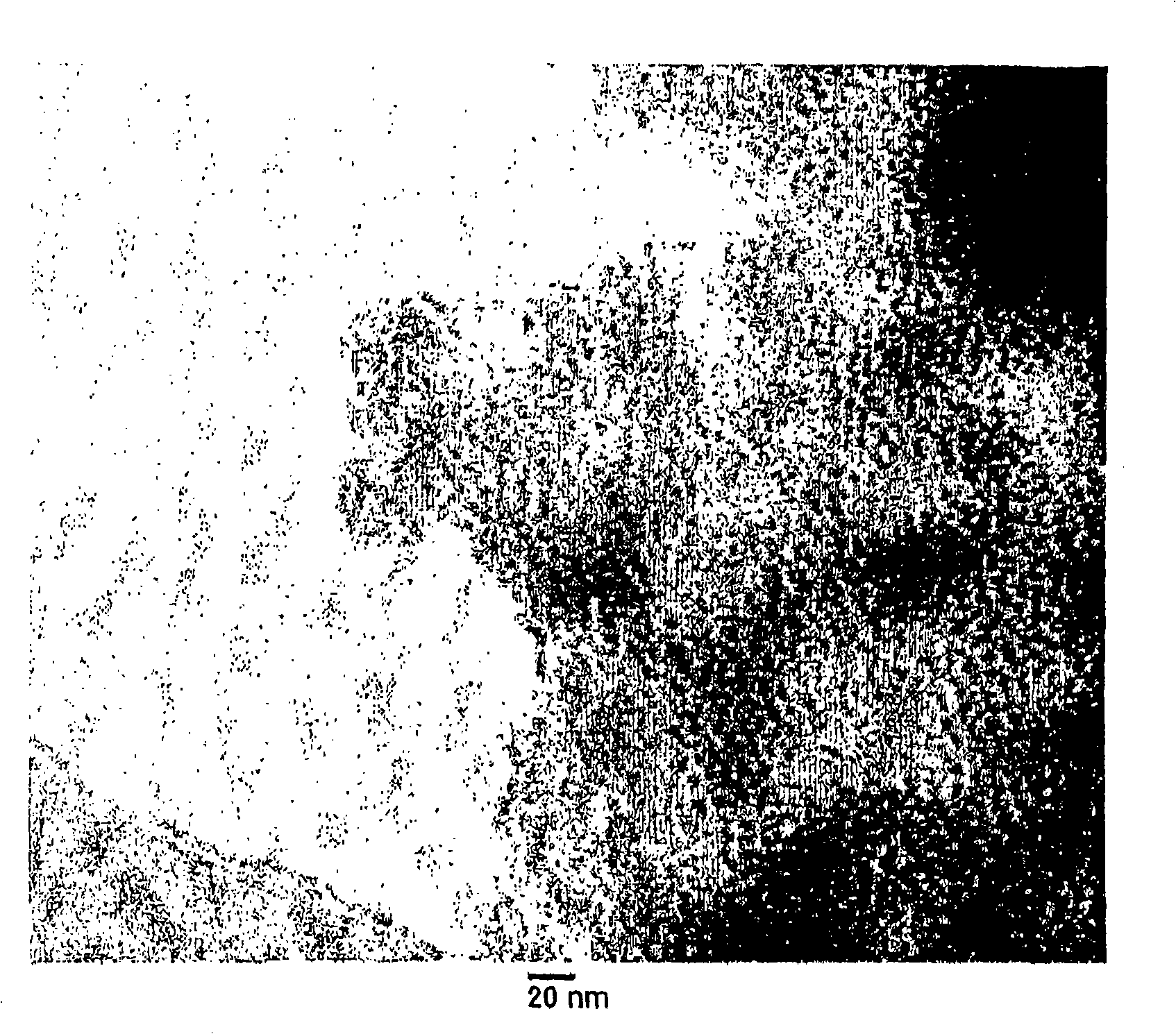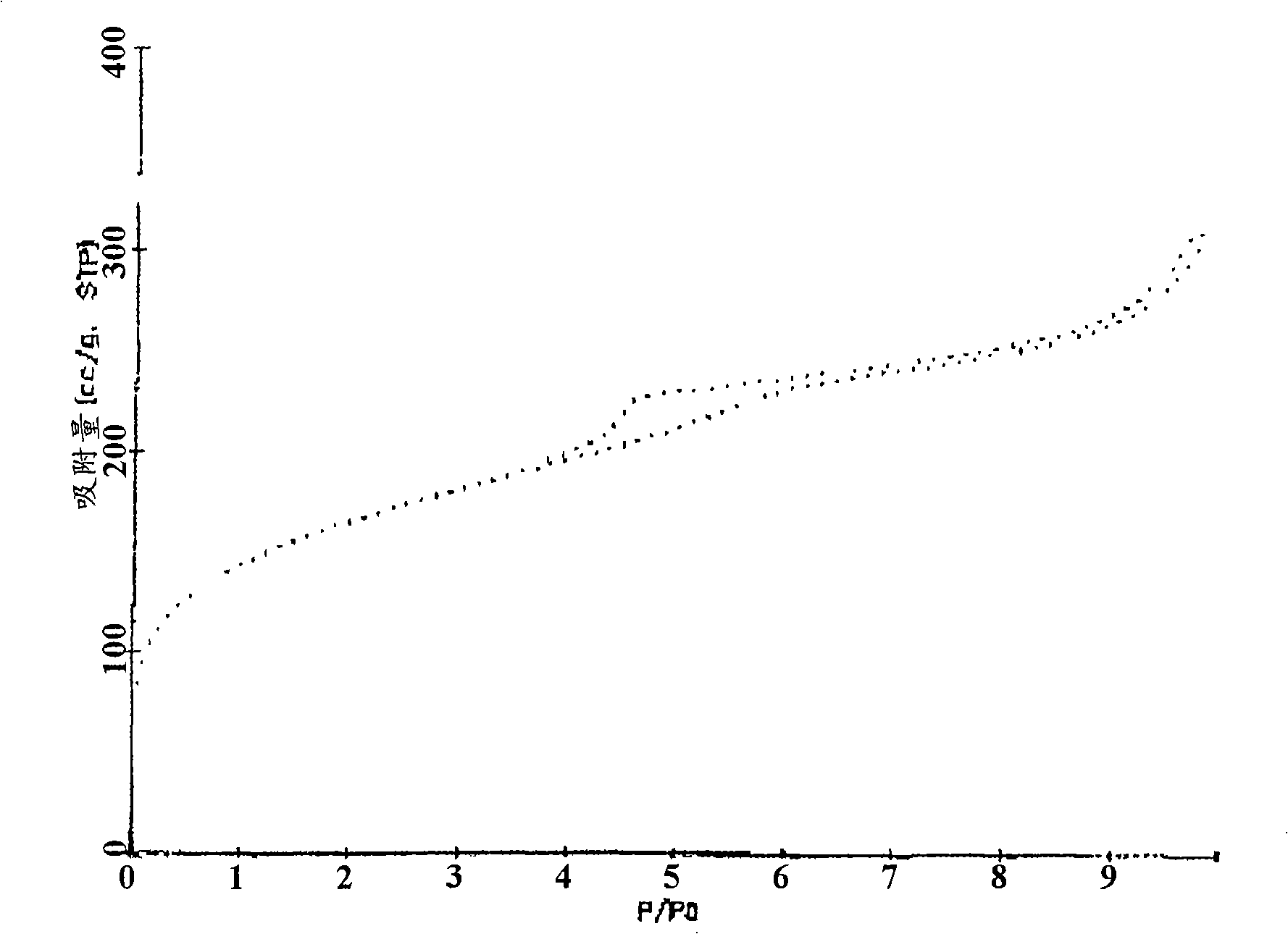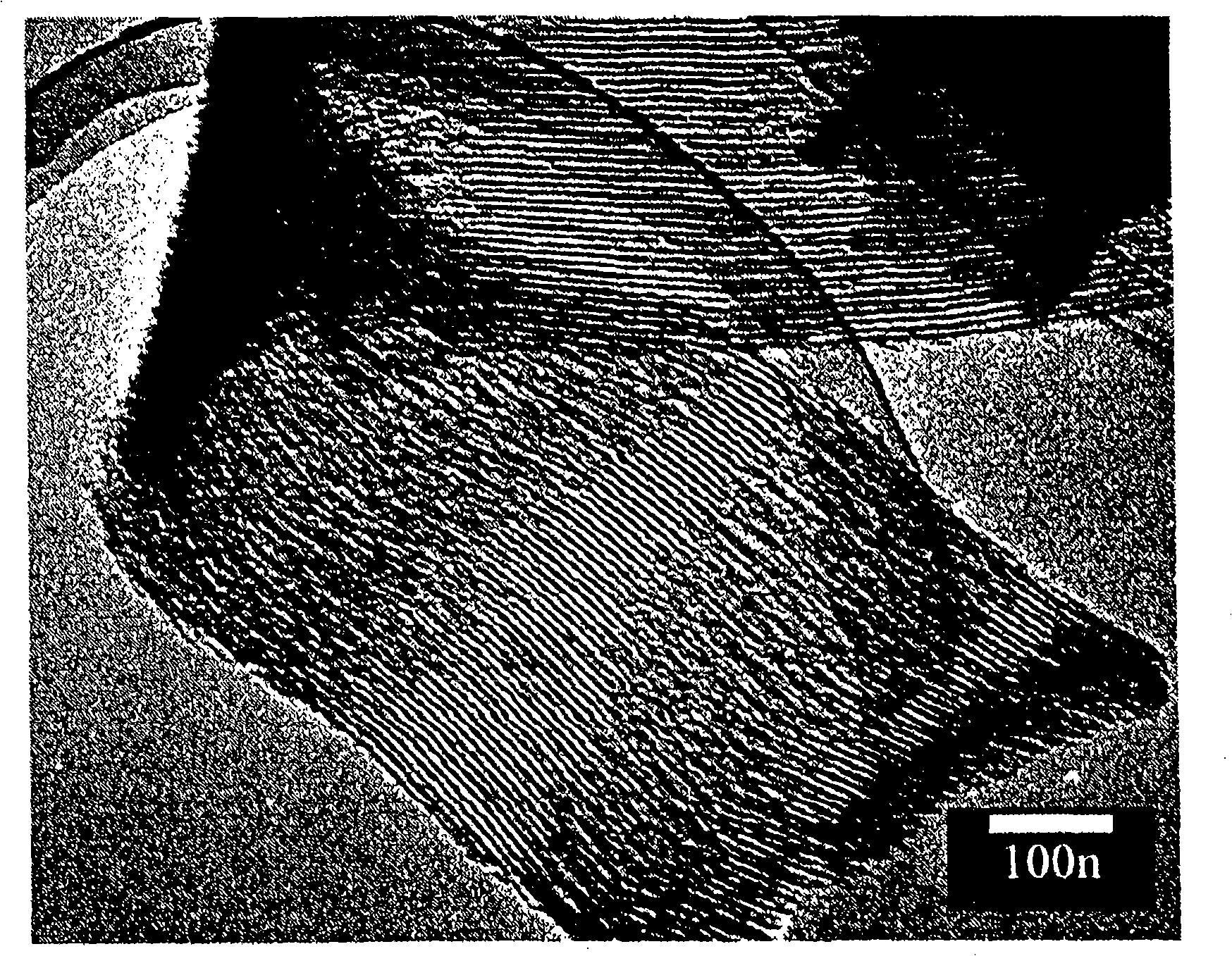Method of manufacturing mesoporous silica and method of manufacturing the same
A technology of silica and ethylene glycol, applied in the direction of silica, silica, silicon compounds, etc., can solve the problems that the advantages of mesoporous silica cannot be fully utilized
- Summary
- Abstract
- Description
- Claims
- Application Information
AI Technical Summary
Problems solved by technology
Method used
Image
Examples
Embodiment 1
[0096] Specific examples are given below to further describe the present invention in detail, but the present invention is not limited by these examples.
[0097] First, the production method of the water-soluble silicate monomer used in the present invention will be described.
Synthetic example 1
[0099] Add 20.8g (0.1mol) of tetraethoxysilane and 24.9g (0.4mol) of ethylene glycol to 150ml of acetonitrile, and further add 1.8g of strongly acidic ion exchange resin (Dow EX50W-X8: manufactured by Dow Chemical) as a solid catalyst , and then mixed and stirred at room temperature. The reaction solution which started to separate into two layers was uniformly dissolved after about 1 hour. Stirring was then continued for 5 days, the solid catalyst was separated by filtration, and acetonitrile was distilled off under reduced pressure to obtain 39 g of a transparent viscous liquid. As a result of NMR analysis, it was confirmed that it was the target product (tetrakis(2-hydroxyethoxy)silane) (yield: 72.5%).
[0100] Preparation of mesoporous silica
[0101]The present inventors prepared a water-soluble silicate monomer according to the above synthesis example, and tried to prepare mesoporous silica by using a nonionic surfactant and the water-soluble silicate monomer.
[010...
Embodiment 9
[0118] Add 0.8 g of surfactant POE (10 mol) phytosterol ether into 3.2 g of ion-exchanged water, and stir until uniform. It was confirmed by microscopic observation or the like that this surfactant solution was a nematic chiral liquid crystal phase. 1.0 g of tetrakis(hydroxyethoxy)silane was added to this liquid crystal, and it stirred for 10 minutes. The solution was transparent and homogeneous in appearance. When the solution was left to stand at 25° C. for 3 hours, the entire solution became cloudy, and when it was left to stand for 17 hours, the entire solution formed a gel in a cloudy state. The gel was freeze-dried to remove water, and then ethanol was added and left to stand overnight at 37°C to remove the ethanol solution containing the surfactant. The remaining white powder was dried by a rotary evaporator to obtain silica powder.
[0119] The silica powder obtained in Example 9 above was observed by a transmission electron microscope, and it was confirmed that the...
PUM
 Login to View More
Login to View More Abstract
Description
Claims
Application Information
 Login to View More
Login to View More - R&D
- Intellectual Property
- Life Sciences
- Materials
- Tech Scout
- Unparalleled Data Quality
- Higher Quality Content
- 60% Fewer Hallucinations
Browse by: Latest US Patents, China's latest patents, Technical Efficacy Thesaurus, Application Domain, Technology Topic, Popular Technical Reports.
© 2025 PatSnap. All rights reserved.Legal|Privacy policy|Modern Slavery Act Transparency Statement|Sitemap|About US| Contact US: help@patsnap.com



